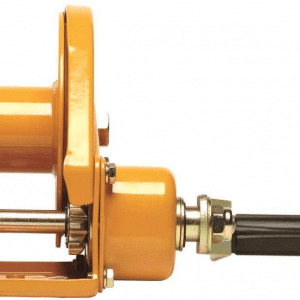In the world of rigging and towing, two indispensable tools stand out: the winch and the shackle. While both are essential for various tasks, they serve distinct purposes and possess unique features that make them indispensable in different situations. Understanding the difference between these two tools is crucial for ensuring safety, efficiency, and optimal performance in any rigging or towing operation.

The Winch: A Powerhouse of Pulling
At the heart of any towing operation lies the winch, a powerful mechanical device designed to pull heavy loads with ease. Whether mounted on a vehicle, anchored to the ground, or installed on a boat, winches come in various shapes and sizes to suit different applications.
Functionality:
Winches operate by winding a cable or rope around a drum, creating a pulling force capable of moving large objects. They are commonly used in off-road recovery, vehicle recovery, marine applications, construction sites, and industrial settings.
Types of Winches:
There are several types of winches available, including electric winches, hydraulic winches, and manual winches. Electric winches are popular for their ease of use and versatility, while hydraulic winches offer exceptional power and reliability. Manual winches, although less common, are preferred in situations where power sources are limited or unavailable.
Key Features:
- High pulling capacity: Winches are designed to handle heavy loads, making them ideal for lifting and pulling tasks.
- Remote operation: Many modern winches come with remote control capabilities, allowing users to operate them from a safe distance.
- Line speed: Winches offer variable line speed options, allowing users to adjust the pulling speed according to the task at hand.
- Durability: Built with rugged materials and robust construction, winches are engineered to withstand harsh environmental conditions and heavy usage.
The Shackle: A Versatile Link in Rigging
Complementing the winch is the shackle, a versatile and indispensable tool in rigging and towing operations. Shaped like a horseshoe with a threaded pin or bolt, shackles are used to securely connect various components of a rigging system.
Functionality:
Shackles serve as connectors, joining cables, chains, ropes, and other rigging components together to form a cohesive and secure system. They are commonly used in lifting applications, towing operations, marine rigging, and construction projects.
Types of Shackles:
There are several types of shackles available, including bow shackles, dee shackles, and screw pin shackles. Each type is designed for specific applications and load capacities, ensuring compatibility with various rigging setups.
Key Features:
- Load capacity: Shackles are available in a range of load capacities to suit different lifting and towing requirements.
- Versatility: Shackles can be used in conjunction with a wide range of rigging equipment, including slings, hooks, and chains.
- Durability: Constructed from high-strength steel or alloy materials, shackles are built to withstand heavy loads and harsh operating conditions.
- Secure connection: Shackles feature a threaded pin or bolt mechanism that ensures a secure and reliable connection between rigging components.
Choosing the Right Tool for the Job
While both winches and shackles play vital roles in rigging and towing operations, selecting the right tool for the job is essential for achieving optimal results. When deciding between a winch and a shackle, consider factors such as the nature of the task, the weight of the load, environmental conditions, and safety requirements.
For tasks that require pulling or lifting heavy loads over long distances, a winch is the preferred choice due to its high pulling capacity and variable line speed capabilities. On the other hand, shackles are ideal for connecting rigging components together, providing a secure and reliable link in the rigging system.
In short, understanding the difference between winches and shackles is essential for ensuring safe, efficient, and successful rigging and towing operations. By choosing the right tool for the job and following proper rigging practices, operators can achieve optimal performance and minimize the risk of accidents or equipment failure.

No comments yet